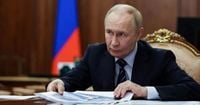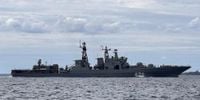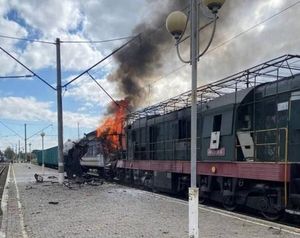Denmark, a nation known for its calm and order, has found itself at the epicenter of a mounting security crisis that’s rippling across Europe. In late September and early October 2025, a barrage of unidentified drone incursions disrupted Danish military installations and airports, including the abrupt closure of Copenhagen Airport for nearly four hours. These incidents, according to Reuters and the Associated Press, left travelers stranded and authorities scrambling to respond, and they signaled a chilling escalation in what Danish leaders now openly call a Russian-led hybrid war against Europe.
The initial wave of drone sightings was not isolated to Denmark. Airports in Oslo and Munich also faced shutdowns after drones appeared in restricted airspace, with Munich Airport halting flights on October 3, 2025, affecting some 6,500 passengers and grounding at least 17 flights the previous evening. Flights resumed gradually the next morning, but delays persisted. Meanwhile, Belgian authorities were investigating 15 drone sightings over the Elsenborn military site near the German border, with the drones later spotted in Düren, Germany. Germany’s Interior Minister Alexander Dobrindt announced plans to raise the issue of anti-drone defenses at a meeting of European interior ministers.
For Denmark, the threat felt especially acute. The government swiftly deployed a special radar system at Copenhagen Airport, and allied military assets from France, Germany, the Netherlands, Sweden, and the United Kingdom arrived to bolster security ahead of a major European summit. Danish intelligence chief Finn Borch warned that the risk of Russian sabotage was “high,” pointing to similar violations of NATO airspace in Poland, Romania, and Estonia. The timing of the drone incursions—just days after Denmark’s largest-ever arms purchase—suggested a deliberate attempt to probe and unsettle European defenses.
Prime Minister Mette Frederiksen did not mince words at the Seventh European Political Community Summit in Copenhagen. “Europe is in a hybrid war being waged by Russia, and Ukraine is our first line of defense,” she declared, echoing a sentiment that resonated with the 43 heads of state and EU leaders present. She later called the situation “the most difficult and dangerous since the end of the Second World War.” The term “hybrid war” has come to define Russia’s evolving playbook—one that blends conventional military power with cyber-attacks, disinformation campaigns, economic pressure, and, increasingly, the use of drones to disrupt and intimidate.
The immediate aftermath of the drone incidents saw Denmark’s government urging citizens to stockpile enough supplies to survive at least three days without electricity, food, or water—a recommendation that, until now, had been largely ignored. But as the reality of the threat set in, Danes began to take the warnings seriously, and media outlets across the country started discussing emergency preparedness in detail.
The sense of unease deepened as details emerged about Russian maritime provocations in Danish waters. Thomas Arenkiel, director of Danish military intelligence, revealed that Danish Air Force helicopters and naval vessels had been targeted by Russian warships’ tracking radars, with weapons physically aimed at them. In some cases, Russian vessels deliberately sailed on collision courses with Danish ships. “Russia is using military tools, including aggressive ones, to pressure us without crossing the threshold into traditional armed conflict,” Arenkiel said, according to Danish media reports. He also noted that one Russian vessel had anchored in Danish waters for over a week—possibly to interfere with Denmark’s efforts to restrict Russia’s shadow fleet of tankers used to evade Western oil sanctions. These ships, equipped with active sonars and jamming systems, were blamed for severe GPS disruptions across Denmark.
The shadowy nature of these provocations was underscored when French authorities detained the captain and first mate of the Russian-linked oil tanker Boracay, a vessel suspected of involvement in the drone incidents. The Boracay, which had been stationed off Denmark during the drone flights, refused to cooperate with investigators. French President Emmanuel Macron described the offenses as “very serious,” justifying a judicial probe amid suspicions that the tanker may have served as a launchpad for the drone incursions.
Russian President Vladimir Putin, for his part, mocked the European response. On October 2, he quipped that he would “no longer launch drones in Denmark or France,” adding, “there are a lot of weirdos” in Europe who fly drones “just for fun.” But Danish officials weren’t laughing. As Arenkiel put it, “Russia wants to create uncertainty and internal disagreements among allies so that we stop supporting Ukraine and do not allow us to make decisions that contradict their interests and further harm the Russian economy.”
The political fallout was swift and divisive. At the Copenhagen summit, European leaders clashed over how to respond. Some called for using frozen Russian assets to fund a massive loan to Ukraine, while others, including Belgium and Hungary, voiced deep reservations about the legal and financial risks. Tensions flared between Poland and Hungary, with Polish Prime Minister Donald Tusk accusing Hungary’s Viktor Orbán of “financing Moscow’s war” by continuing to buy Russian energy. Orbán pushed back, warning that “such rhetoric was a dangerous game with the lives and security of millions of Europeans.”
The crisis has also exposed the limits of NATO’s influence. With the United States signaling a reduction in security funding for Eastern Europe, European nations are under pressure to shoulder more of the defense burden. NATO navies now routinely track an increasing number of shadow fleet vessels suspected of espionage or sanctions-busting. The alliance’s ability to respond in real time, however, is being tested as Russian MiG-31 jets violate Estonian airspace and new forms of hybrid warfare blur the lines between peace and conflict.
As the West grapples with these challenges, Russia continues to deepen its strategic partnerships with China, Venezuela, and other members of the BRICS and Shanghai Cooperation Organisation. The emergence of the Chinese digital yuan threatens the petrodollar’s dominance, further complicating the geopolitical chessboard. For Europe, the stakes are higher than ever—not just in terms of military security, but in the broader struggle for energy independence, economic resilience, and political unity.
For ordinary Danes, the events of recent weeks have made the stakes painfully real. The sight of airports closed, foreign military hardware in the skies, and the knowledge that their country could be targeted in a shadow war have shattered any lingering sense of complacency. As Prime Minister Frederiksen emphasized, this is not just Denmark’s fight. Ukraine remains the “first line of defense,” but the implications of Russian hybrid tactics now reach deep into the heart of Western Europe.
Whether Europe can muster the unity, resolve, and resources needed to confront these new threats remains to be seen. Denmark’s experience with suspected Russian hybrid attacks—combining drones, shadow fleet intrigue, and energy politics—marks a new era of insecurity for the continent. The greatest vulnerability, as these events reveal, may not be technological but political: without shared purpose and determination, even the most advanced defenses risk being undermined from within.





